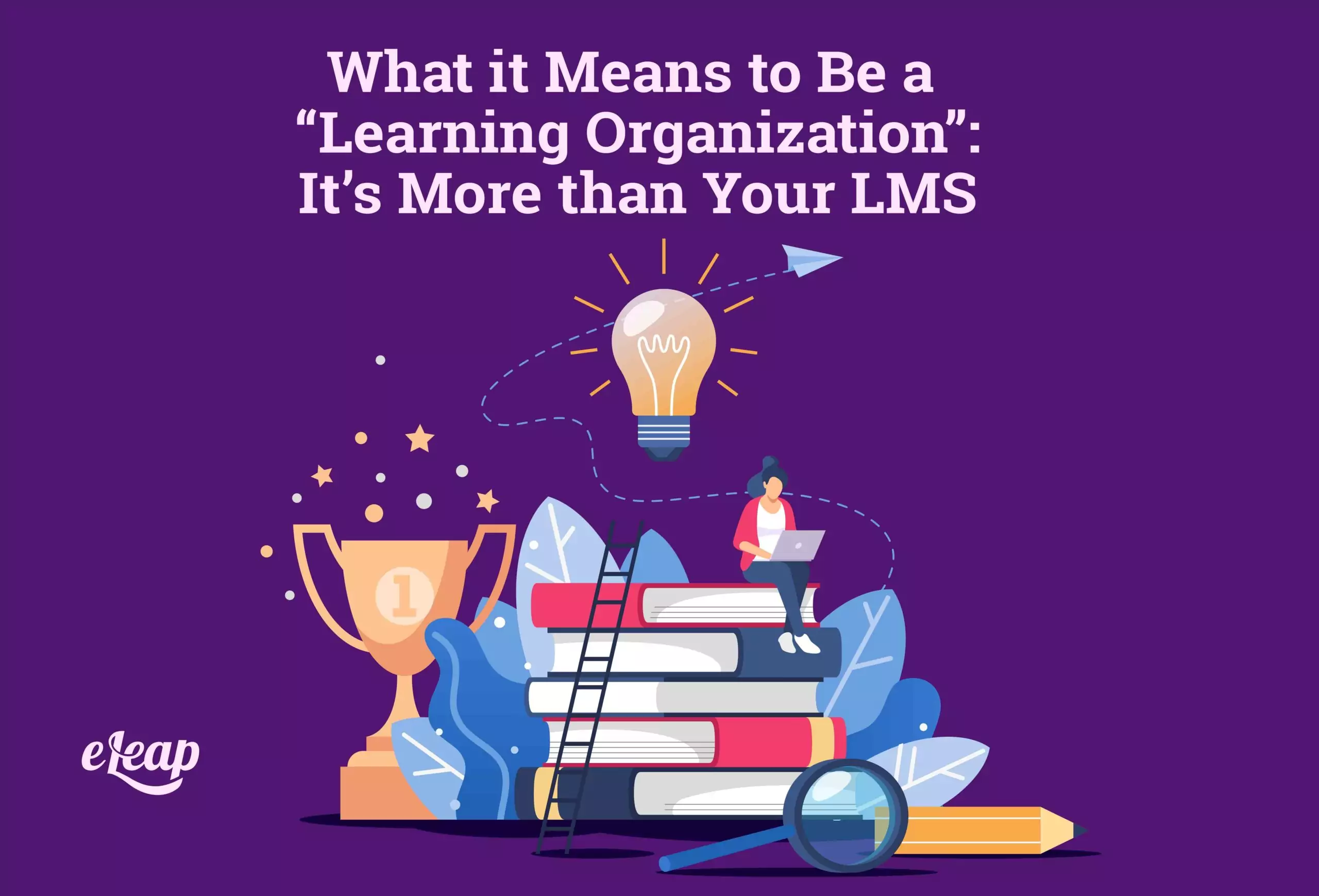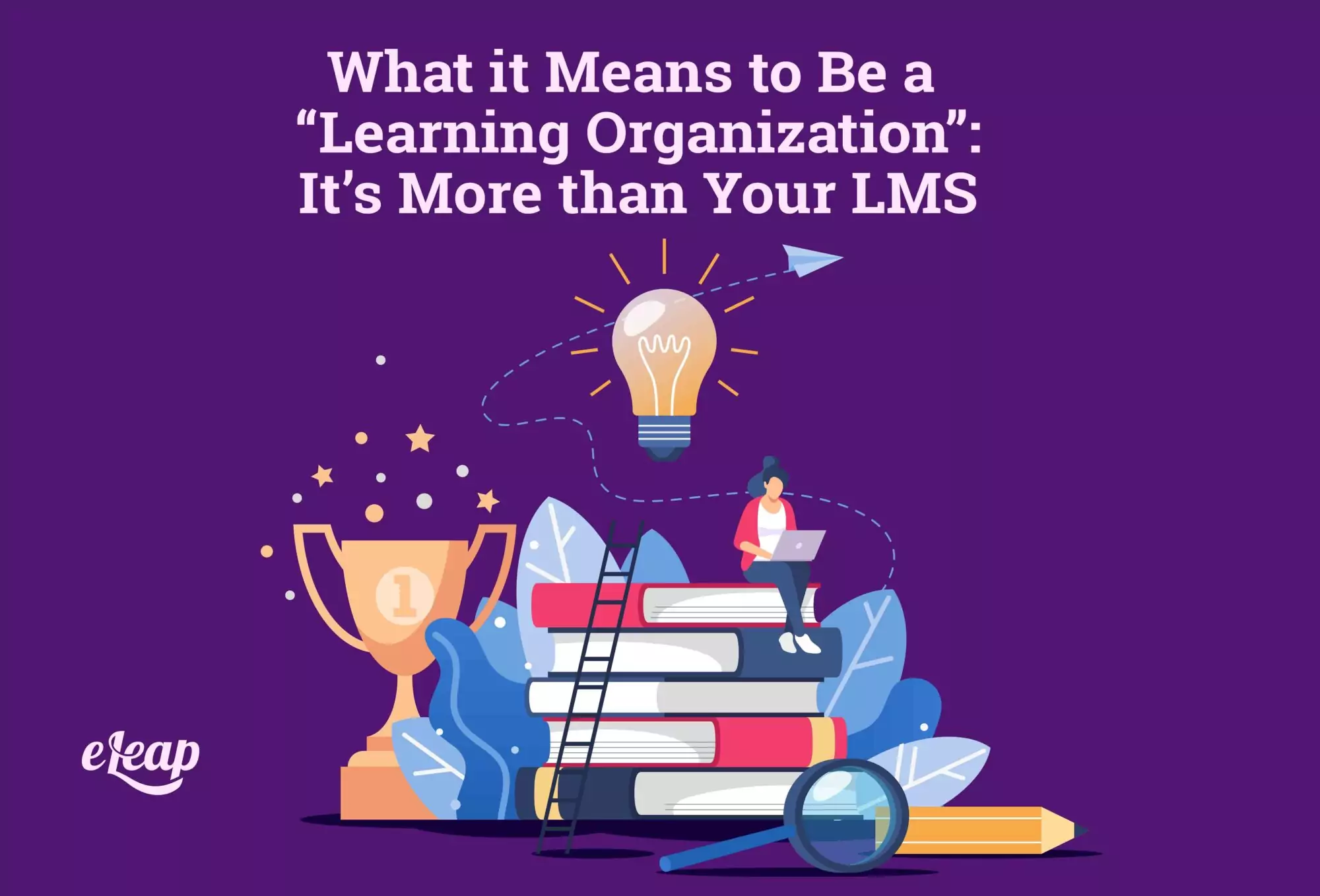What it Means to Be a “Learning Organization”: It’s More than Your LMS

Having a learning management system in place is only the beginning of the journey for organizations that are seeking to future their knowledge and industry expertise. Continuous improvement is becoming even more critical as organizations strive to gain a competitive edge in the global economy. There is a list a mile long that is ever-changing, and you may never be able to keep up on all the information out there unless you truly commit to learning and development in every way possible.
According to Harvard Business Review, “A learning organization is an organization skilled at creating, acquiring, and transferring knowledge, and at modifying its behavior to reflect new knowledge and insights.”
In their article on how to build a learning organization, they discuss the importance of defining that term as the first step, which leads to a universal truth: learning cannot happen without new ideas and initiatives. Sometimes, these ideas are created randomly out of creative insight; other times they’re forced as a means of discovering room for organizational improvement. However, it’s not up to the organization alone—the organization needs to change the way people work and learn, otherwise, it’s only the potential for improvement that you’ll find.
So, you have to learn something new. That can start with the adoption of an LMS, but that’s just the beginning. After all, when your organization has a strong learning platform in place, there will be plenty of opportunities for upskilling, learning, and career development for your people. Some companies have already fallen behind and are playing catch-up, but they’re doing so rapidly because they now understand and appreciate the value of truly being a learning organization.

How Your LMS is Involved – The Building Blocks of Becoming a Learning Organization
While it’s certainly much more than just your LMS that makes you a learning organization (or not), this is the basis for which most of the learning will take place. It is also the tool that you will use to ensure that people can upskill and monitor their efforts. It offers systems and processes that focus on the five main areas where learning organizations typically excel or are defined:
- Experimenting with new approaches
- Systematic problem solving
- Learning from others’ experiences and best practices
- Learning from their own history and experience
- Transferring knowledge efficiently within the organization
The right LMS will give you the chance to give all of these elements to your employees, and incorporate learning into real-world situations. It will prevent the issue of isolated examples and ensure that everyone can get an applicable lesson that they can then put to use to better their own careers and more.
An LMS will allow you to identify learning opportunities, give people the chance to suggest their own, include skills gap training, and ensure that you’ve got constant monitoring on the learning and development of your people. If you’re going to make your reality of becoming a learning organization come true, you’re going to need to utilize all the tools available to that end.
Creating Meaning and Culture
Another big aspect of being a learning organization comes in creating culture and meaning for your people. This means employee culture, which could also refer to:
- Learning cultures
- Performance cultures
- Purpose-Driven cultures
- Sales cultures
- Customer-focused cultures
- Etc.
It’s about the factors and elements involved in each of these cultures and what they bring to your organization. For example, learning cultures can promote curiosity, exploration, personal development, and so forth. customer-focused cultures will typically promote upskilling and development that supports better customer interactions, the customer journey, sales funnel, etc.
It’s 2022 and The Great Resignation is still lingering. The number one thing that employees are looking for is culture. And within that culture, they want challenge, opportunity, and a chance to be a part of something and not just an employee that’s on your payroll.
Use Your PMS to Identify Opportunities, Too
Of course, the biggest way to benefit here is to integrate your LMS and PMS so that you can track people’s progress, identify strengths and weaknesses, and even come up with new opportunities for people to learn and grow. Your LMS will tell you how everyone is learning, but your PMS will tell you how people are actually performing on the job.
It’s about integration, and it’s about time. There are several options for LMS and PMS hosting, along with cloud options and self-hosted solutions, adding up to some 1000+ platforms, apps, and tools just for learning and performance management. To say there’s no shortage of options is an understatement. However, it also means that you need to take the time to find an LMS and PMS that work well together to deliver the outcomes that you need and monitor your organization’s growth and development. In addition to creating meaning for people, it’s about managing learning opportunities and promoting development, as well as utilizing all the appropriate tools to measure every metric necessary along the way.
Agile, Flexible Solutions are a Must
Whether it’s your learning or performance management suite that you’re talking about, these tools need to provide flexible and agile solutions for your organization’s learning and development. After all, the world has already shown us just how quickly it can switch gears. Businesses need to be on top of that with learning opportunities and development strategies to ensure that all members of the organization feel valued and best prepared for their duties.
And finally, being a learning organization means taking the time to read blogs like this and consider how you can invest in LMS software like the solutions available from eLeaP to help your team develop and thrive. You’ll also attract better talent, build better authority, and likely, end up learning a few things about the future of business and how to make sure that you’re always ready for the next big thing in L&D. When organizations put the development of their people first by investing in great learning tools, they stake their claim on a place in the future.